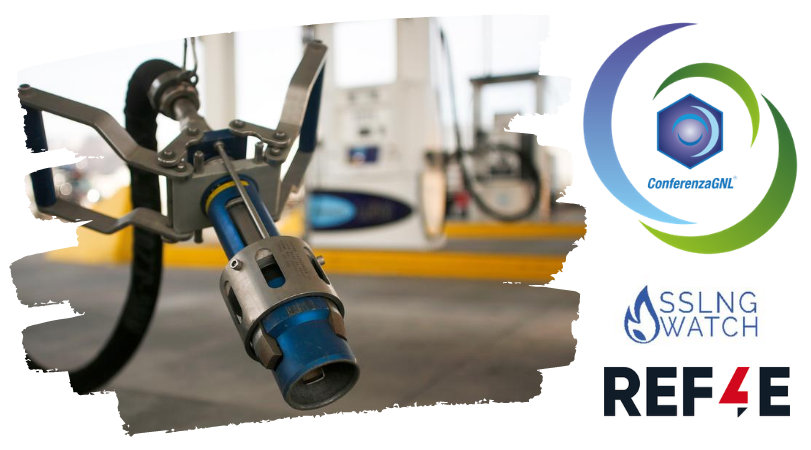
The health emergency has slightly slowed the growth of the national small-scale LNG chain. This is what the REF-E energy research center notes in the six-monthly update of the SSLNG WATCH observatory, made public by a joint press release with ConferenzaGNL.
The greater resilience, confirming the environmental quality of this fuel, in addition to the technological and economic maturity, has been had in the heavy land transport sector, both for the increase in infrastructure and for growth and the means of circulation.
At the end of June 2020 there are 93 service stations equipped with LNG. From the end of 2019, those that supply liquid methane to trucks and compressed to cars have grown from 70 to 81; also those that only have a compressed rogus have grown by one, today 12. In total 93 public and private service stations have chosen LNG. Over 3,000 LNG trucks traveling through Italy. Vehicle registrations exceeded 2,500 in the half year (+ 350 compared to 2,174 at the end of 2019), to which must be added the means registered abroad, about 20% of the working capital.
The territorial imbalance between the Center-North and South of the country is increasing; none of the new stations have been built in the South. 61% of the plants are located in the North, 28% in the Center and only 11% in the South. The provinces with the greatest presence are Perugia (7), Verona and Bergamo (5). Conversely, the new statistics developed by REF-E confirm the liveliness and resourcefulness of small and medium-sized national operators in the sector: 74% of the service stations have been created by independent network operators with their own brand.
The drop in fuel consumption for heavy transport, caused by the health emergency, fell in the six months by only 20% for LNG, against greater reductions for other fuels. The data can be linked to the prevalent use, for environmental reasons, of LNG in the transport of food products. For the same reason, since the plants are mainly dedicated to food production, the consumption of industrial plants fell by 12%. Only one new industrial plant was activated in the half year.
Consumption of the two active city networks was stable (the two under construction are late). The total consumption of all LNG-based activities, transport, networks and isolated industries, fell by 25%, while the total number of LNG plants rose to 120 compared to 107 at the end of 2019. There are more than 70 projects in evaluation and construction course.
In this overall positive scenario, the blocking of the cruise business, whose ships are increasingly oriented towards the use of LNG, is offset. Construction plans for new ships confirmed. The "Costa Smeralda" and "Aida Nova", the first Italian flag and the second German flag, both of the Carnival Group, the most modern LNG cruise ships operating in the Mediterranean, were stopped in March in the Port of Marseille. To resume activity and climb the Italian ports, they are now waiting for the CST (national Scientific Technical Committee for COVID) to approve the health protocols prepared for some time by the main national shipowners in the sector.
The expected consumption of the Elio di Caronte ferry was also missing, which cannot use LNG yet due to the long-standing lack of regulation in Italy for supplies from tankers to ships and from ships to ships, and is forced to use, from the entrance in operation in November 2018, the much more polluting diesel fuel in the Strait of Messina.
Slight delays, being recovered, on the construction sites of the first two coastal deposits under construction, Higas in Santa Giusta (Oristano) and Edison-Pir in Ravenna. The first will be operational by next November, kicking off the long-awaited methanisation of Sardinia, while the second is confirmed for mid-2021. European funding approved for the coastal deposits of Naples and Trieste. After one year from the start of the request to the Ministry of the Environment, the decree of exclusion from the EIA for the supply of tankers at the LNG OLT terminal off the coast of Livorno was approved at the end of July 2020 (the news was released coinciding with the publication of the Report, editor's note).
The collapse in oil prices has had little impact on the relative convenience of small-sized LNG, while that of natural gas has reached the parity between that imported via LNG and that via the gas pipeline. In particular for heavy transport, the economic advantage of LNG compared to diesel fuel stood at 36% in June 2020, compared to 45% at the end of 2019.
In the Mediterranean area, the half-yearly update of REF-E describes the situation of the small scale LNG infrastructures, as well as in Italy, Spain, France, Greece, Turkey and signals news in particular for the conversion of electricity production with LNG from Corsica, with provisions of the French Government and Regulatory Authority.
Among the other changes in the half-yearly report, REF-E publishes the list of sellers authorized to sell LNG to end consumers, still imported from abroad via tank trucks for delivery to the plants of the various Italian users.
The summary of the half-yearly update is available at https://www.refe.com/it/expertise/sslng-watch, while the full report is available to subscribers but it is possible to request it at www.ref-e.com/it
 EN
EN  it
it

